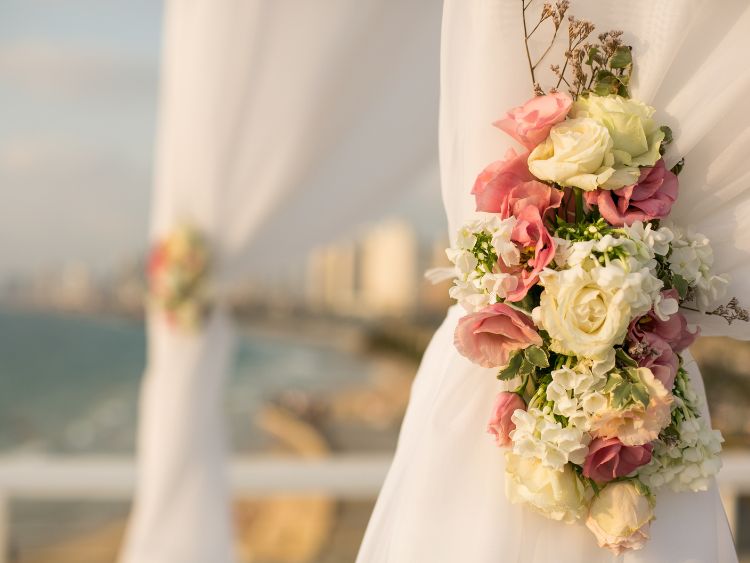The Ultimate Guide to a White Tie Event: Elegance and Tradition Defined
What is a White Tie Event?
When you hear “white tie event,” visions of opulent ballrooms, grand soirées, and the highest echelon of society likely come to mind. As the most formal dress code in Western fashion, white tie events are rare, prestigious, and steeped in tradition. If you ever receive an invitation to such an event, consider it an honor—and prepare to dress and behave accordingly.
The Origins of the White Tie Dress Code
The white tie dress code dates back to the early 19th century when European aristocracy and the social elite sought a uniform standard for their formal gatherings. Unlike the more relaxed black tie, white tie demands strict adherence to sartorial norms that have been relatively unchanged for over two centuries. Men don tailcoats and women don full-length gowns, creating a scene of unparalleled elegance.
White Tie Attire: What to Wear?
So, what exactly does one wear to a white tie event? Let’s break it down.
For Men:
- Tailcoat: The most distinctive piece, the tailcoat is black, with silk-faced lapels. Unlike a tuxedo jacket, it is short in the front and long in the back, resembling the tails of a swallow.
- White Piqué Waistcoat: Underneath the tailcoat, a low-cut white piqué waistcoat adds a touch of contrast. The waistcoat should be barely visible when the jacket is buttoned.
- White Dress Shirt: A white dress shirt with a stiff, winged collar is essential. It should be paired with a white piqué bow tie.
- Black Trousers: High-waisted, black trousers with a satin stripe running down the side.
- Black Patent Leather Shoes: Shiny, black patent leather shoes are the footwear of choice. Oxfords or court shoes are preferred.
- Accessories: Cufflinks, a white pocket square, and white gloves complete the look.
For Women:
- Full-Length Gown: The gown should be floor-length and made of luxurious fabric. Think silk, satin, or velvet.
- Gloves: Long gloves, usually white or a shade matching the gown, are a must. They should be worn during the event and removed only when eating.
- Jewelry: Elegant and understated. Diamonds or pearls are traditional choices.
- Hairstyle: Hair should be styled in an updo or neatly coiffed.
- Footwear: Closed-toe heels are the standard, with a preference for those that match the gown.
- Accessories: A clutch or evening bag, and perhaps a delicate shawl, complete the ensemble.
Navigating the White Tie Etiquette
A white tie event isn’t just about looking the part; it’s about behaving with the utmost decorum. Here are some key points to remember:
- Arrival: Punctuality is crucial. Arriving fashionably late is not an option at a white tie event.
- Greetings: Gentlemen should greet ladies with a slight bow, while women may curtsy. Handshakes are reserved for introductions among men.
- Table Manners: Follow traditional dining etiquette—use utensils from the outside in, keep your elbows off the table, and never speak with food in your mouth.
- Conversation: Keep the conversation light and polite. Avoid controversial topics like politics or religion.
- Dancing: If there’s dancing, it will likely be a waltz or other classical dance. If you’re not familiar with the steps, it’s wise to take a few lessons beforehand.
- Departing: It’s customary to thank the host before leaving. A handwritten thank-you note sent the next day is also a nice gesture.
The Role of the Host and Guest
The Host’s Responsibilities:
As a host of a white tie event, you carry the responsibility of ensuring the evening’s success. This includes everything from the venue and décor to the flow of the evening.
- Venue: The setting should exude elegance—think grand ballrooms or historic estates.
- Invitation: Send out invitations well in advance, clearly stating the dress code. It’s also considerate to include a brief note on what to expect if the event includes unique activities or customs.
- Seating Arrangements: Careful planning is needed to ensure guests are seated where they’ll be most comfortable and engaged.
- Entertainment: Live orchestras, classical music, or even opera performances are standard. Consider having a dance floor for a traditional waltz.
- Catering: The menu should be gourmet, with multiple courses. Champagne and fine wines are staples at these events.
The Guest’s Role:
As a guest, your role is to honor the host by dressing appropriately and behaving impeccably.
- RSVP: Always respond to the invitation promptly. If you must decline, do so graciously.
- Gift: A small token of appreciation for the host is customary. This could be fine wine, gourmet chocolates, or flowers.
- Behavior: Follow the rules of etiquette throughout the evening. Remember, your conduct reflects on your host.
FAQs About White Tie Events
1. Can I wear a black tie to a white tie event? No, a black tie is considered too casual for a white tie event. The dress code must be strictly adhered to, which includes wearing a white bow tie and a tailcoat for men.
2. What if I don’t have a tailcoat? It’s best to rent one if you don’t own a tailcoat. Many formalwear shops offer rental services for such occasions.
3. Are women allowed to wear pantsuits to a white tie event? Traditionally, women are expected to wear full-length gowns. Pantsuits are generally not considered appropriate attire for white tie events.
4. Can I take off my gloves during dinner? Yes, women may remove their gloves during the meal, but they should be worn at all other times during the event.
5. What should I do if I’m unsure about the dress code? If in doubt, always err on the side of formality. You can also reach out to the host for clarification.
Conclusion: Embrace the Elegance of White Tie
Attending a white tie event is a rare and privileged experience. It’s an opportunity to step back in time and embrace a level of elegance and formality that’s all too rare in today’s world. Whether you’re donning a tailcoat or a full-length gown, remember that the key to enjoying such an event is to fully immerse yourself in the tradition, etiquette, and grace that define it.
Authoritative Links:
- www.debretts.com/expertise/etiquette/white-tie-guide/
- www.blacktieguide.com/Formal_Attire/White_Tie/White_Tie_Dress_Code.htm
- www.gentlemansgazette.com/white-tie-guide/
- www.vogue.com/article/white-tie-dress-code-guide
This article should serve as a comprehensive guide for anyone preparing to attend a white tie event. By following these guidelines, you’ll not only look the part but also embody the sophistication and grace that such an event demands.



